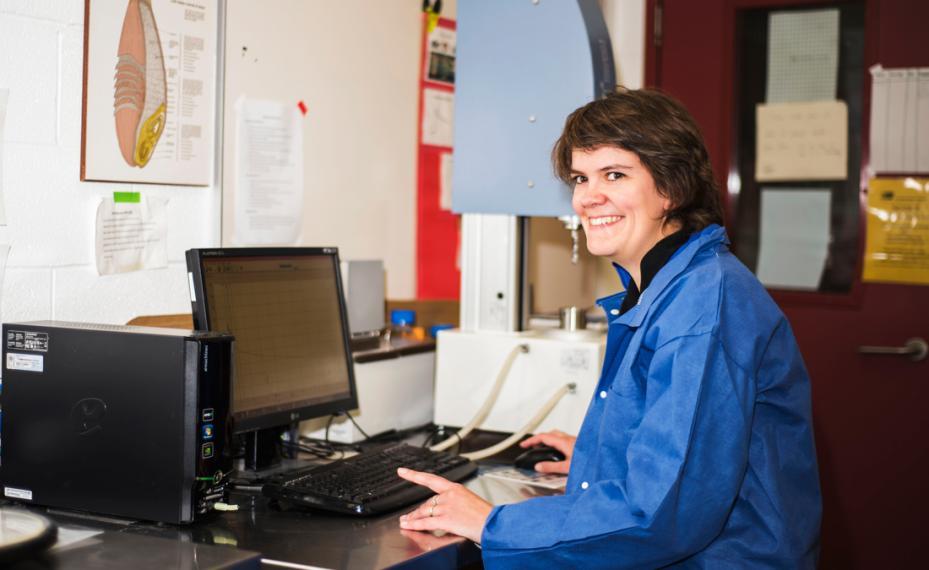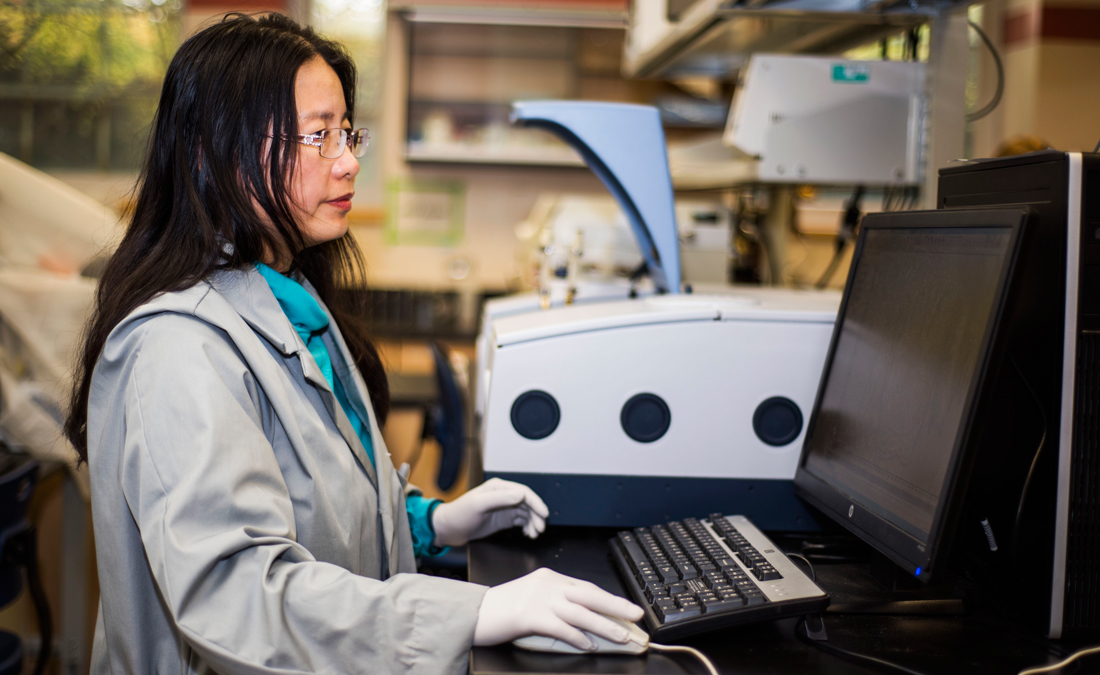Creating delicious (and nutritious) celiac-friendly bread

Warm, freshly baked bread. For some foodies, there isn’t a more delicious treat.
But for about 1 in 100 people worldwide who have celiac disease, the gluten in bread causes an immune response that damages their small intestine. This damage results in a reduced efficiency of the absorption of essential nutrients such as protein, fat, carbohydrates, vitamins and minerals.
The only treatment for celiac disease is a strict gluten-free diet. This means that the consumption of any product containing wheat, rye or barley, such as most beer and bread products, needs to be avoided. Although gluten-free alternatives are available, they often aren’t nearly as delicious or nutritious as their gluten-containing relatives.
"Buckwheat, rice flour…none of these have proteins that have the same functionality to gluten,” says Dr. Iris Joye, a professor in the Department of Food Science. “This leads to products that don’t have the same quality as gluten containing products, and is usually accompanied by a lower protein content and lower dietary fibre content.”
Lower nutritional quality combined with the fact that celiac patients cannot absorb nutrients to the same extent when there is damage to their small intestine, means celiac patients consume more unhealthy products and extract fewer nutrients.
But Joye hopes that within 10 years the gluten-free bread will be just as delicious, nutritious, and of high quality in terms of texture and structure as gluten-containing breads.
To do this, her research program studies the inner-workings of gluten when making bread.
Why is gluten so important to bread?
Gluten is a mixture of proteins that is responsible for dough’s viscoelasticity, and for bread’s soft, consistent and airy texture. Joye explains that to make a high-quality bread, you simply need a certain quantity and quality of gluten.
“A lot of food products have gluten, but gluten functionality is not as important in many products, such as cookies,” she explains. “In these products the structure is mainly determined by components other than the gluten. It is easier to make a high-quality gluten-free cookie than a gluten-free bread.”
Joye’s research aims to better understand how gluten behaves in dough, in order to better mimic the function of these unique proteins to produce high-quality bread.
“The current hypothesis is that gluten produces a spring like structure, which is connected through a loop-train model. These molecular structures can be used to explain the unique viscoelasticity of the dough,” she explains.
Her research team is trying to find further evidence of these molecular structures and is also looking at protein interactions. They want to understand how gluten proteins interact to create the dough structure.
It is the viscoelasticity of dough that gives bread its form, shape and fine crumb structure. And, as it turns out, these characteristics are very hard to mimic through gluten substitutions. If you’ve ever had a loaf of gluten free-bread, you’ve experienced the dense almost rock-like texture of breads made without the viscoelastic results of gluten.
“Gluten is a very very unique protein,” says Joye. “If we know what structures are at the basis of the viscoelasticity than we will be better able to mimic it.”
“In gluten-free products, they take out the gluten containing ingredients, which is wheat flour, and they substitute it with something else. The problem is that every product that is on the market nowadays, cannot yield the same structure as gluten does,” she explains.

Creating a map for better gluten-free bread
Joye’s research group is working on mapping out gluten structures and networks. They test dough at different stages in the process of making bread to understand the basic molecular structures and interactions. What are the mixing properties? How easy is it to obtain an optimally mixed dough? What is needed to make a stable dough? How does fermentation and baking affect the proteins and impact quality? These are all questions Joye is working on answering.
The team uses a FTIR spectrometer to look at the protein structures and couples this with microscopy to see how the structures are distributed over the dough. They also look at starch and gas bubbles.
The goal is to “add more information to the entire tower of knowledge.” And there’s a lot of knowledge in this area, with hundreds of researchers in academia and industry searching for deeper insights and solutions.
“A lot of research has been done. Everyone collects a bit and puts it together,” she says.
Joye thinks the ultimate solution will be in taking wheat flour out of bread completely, and replacing it with something that is “high quality from a protein and dietary fibre point of view, but that can mimic functionality of gluten.”
In her opinion, it’s not about removing gluten from wheat, but finding something that can replicate a whole product, and give people with celiac disease the joy of eating warm, freshly baked bread.
May is Celiac Awareness Month. To learn more visit http://www.celiac.ca/